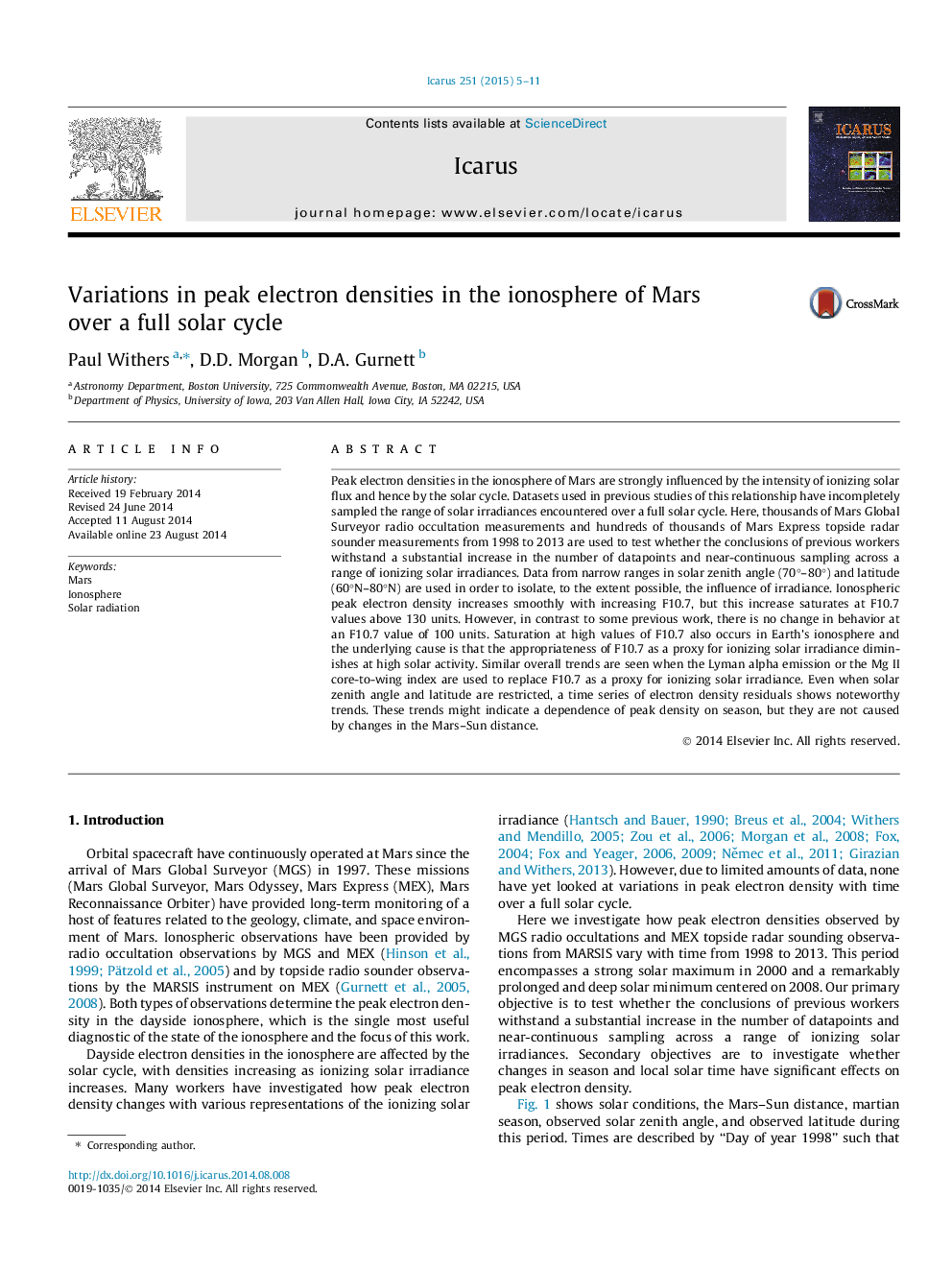| Article ID | Journal | Published Year | Pages | File Type |
|---|---|---|---|---|
| 8136607 | Icarus | 2015 | 7 Pages |
Abstract
Peak electron densities in the ionosphere of Mars are strongly influenced by the intensity of ionizing solar flux and hence by the solar cycle. Datasets used in previous studies of this relationship have incompletely sampled the range of solar irradiances encountered over a full solar cycle. Here, thousands of Mars Global Surveyor radio occultation measurements and hundreds of thousands of Mars Express topside radar sounder measurements from 1998 to 2013 are used to test whether the conclusions of previous workers withstand a substantial increase in the number of datapoints and near-continuous sampling across a range of ionizing solar irradiances. Data from narrow ranges in solar zenith angle (70°-80°) and latitude (60°N-80°N) are used in order to isolate, to the extent possible, the influence of irradiance. Ionospheric peak electron density increases smoothly with increasing F10.7, but this increase saturates at F10.7 values above 130 units. However, in contrast to some previous work, there is no change in behavior at an F10.7 value of 100 units. Saturation at high values of F10.7 also occurs in Earth's ionosphere and the underlying cause is that the appropriateness of F10.7 as a proxy for ionizing solar irradiance diminishes at high solar activity. Similar overall trends are seen when the Lyman alpha emission or the Mg II core-to-wing index are used to replace F10.7 as a proxy for ionizing solar irradiance. Even when solar zenith angle and latitude are restricted, a time series of electron density residuals shows noteworthy trends. These trends might indicate a dependence of peak density on season, but they are not caused by changes in the Mars-Sun distance.
Keywords
Related Topics
Physical Sciences and Engineering
Earth and Planetary Sciences
Space and Planetary Science
Authors
Paul Withers, D.D. Morgan, D.A. Gurnett,
